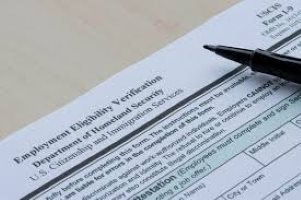As we approach the highly anticipated date of July 31st, 2023, a significant change awaits businesses across the United States. On this day, the remote verification of I-9 documents will be sunsetted, and employers will once again be required to conduct physical inspections of documents. Let’s delve into the implications of the July 31st deadline, the rationale behind the change, and best practices to ensure a seamless transition.
Understanding the I-9 Form and Remote Verification
To set the foundation, let’s explore the purpose and significance of the I-9 form. Form I-9, issued by the United States Citizenship and Immigration Services (USCIS), is used to verify the identity and employment authorization of individuals hired for employment in the United States. Remote verification, introduced during the pandemic, allowed employers to use virtual means to verify documents, easing the burden of in-person inspections. However, with the world recovering from the COVID-19 pandemic, the need for remote verification has diminished, leading to the decision to return to traditional, in-person inspections.
The Sunset of Remote Verification: Rationale and Implications
The decision to sunset remote verification stems from several key considerations. While remote verification provided flexibility and convenience during unprecedented times, it was not without its flaws. Concerns about data security, potential fraud, and the inability to physically examine original documents prompted the USCIS to revert to traditional methods.
Preparing for the Transition: Best Practices for Employers
With the July 31st deadline fast approaching, employers must be proactive in preparing for the transition. Employers will need comprehensive best practices to facilitate a smooth shift back to physical document inspections. These best practices include educating HR teams, communicating with employees, conducting internal audits, and implementing robust record-keeping systems. Emphasis will be placed on striking a balance between compliance and a positive employee experience. This is proving more challenging in an environment where remote work has become a regular practice. It also requires employers to re-verify employees hired during the pandemic who did not have their documents physically inspected, adding to the workload.
Embracing Technology: Modernizing I-9 Compliance
While the return to physical document inspections is imminent, it does not mean technology should be entirely dismissed. Employers can leverage modern I-9 compliance tools to streamline the verification process, enhance accuracy, and improve overall efficiency. These services allow for access to a Notary network for mobile verification as well as having an “authorized representative” appointed by the employer or the employee who can legally review the documents. Many employment screening companies offer this service. Occuscreen, as an example, offers an electronic I-9 and e-Verify process that includes access to a remote Notary service for companies hiring remote workers. Don’t hesitate to reach out if you have questions or if you want to compare your current process.
The July 31st deadline brings a significant shift in how employers verify I-9 documents. Businesses can navigate this transition successfully by understanding the rationale behind the sunset of remote verification, preparing diligently, and embracing technology responsibly. Emphasizing compliance, security, and employee experience, companies can ensure they are well-equipped to meet the challenges and opportunities that lie ahead in the realm of I-9 compliance.

